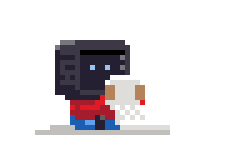Currently, if an image was copied with:
$ skopeo copy \
containers-storage:registry.fedoraproject.org/fedora-toolbox:36 \
containers-storage:localhost/fedora-toolbox:36
... or:
$ podman tag \
registry.fedoraproject.org/fedora-toolbox:36 \
localhost/fedora-toolbox:36
... then it would show up twice in 'list' with the same name, and in the
wrong order.
Either as:
$ toolbox list --images
IMAGE ID IMAGE NAME CREATED
2110dbbc33d2 localhost/fedora-toolbox:36 1 day...
e085805ade4a registry.access.redhat.com/ubi8/toolbox:latest 1 day...
2110dbbc33d2 localhost/fedora-toolbox:36 1 day...
70cbe2ce60ca registry.fedoraproject.org/fedora-toolbox:34 1 day...
... or as:
$ toolbox list --images
IMAGE ID IMAGE NAME CREATED
2110dbbc33d2 registry.fedoraproject.org/fedora-toolbox:36 1 day...
e085805ade4a registry.access.redhat.com/ubi8/toolbox:latest 1 day...
2110dbbc33d2 registry.fedoraproject.org/fedora-toolbox:36 1 day...
70cbe2ce60ca registry.fedoraproject.org/fedora-toolbox:34 1 day...
The correct output should be similar to 'podman images', and be sorted
in ascending order of the names:
$ toolbox list --images
IMAGE ID IMAGE NAME CREATED
2110dbbc33d2 localhost/fedora-toolbox:36 1 day...
e085805ade4a registry.access.redhat.com/ubi8/toolbox:latest 1 day...
70cbe2ce60ca registry.fedoraproject.org/fedora-toolbox:34 1 day...
2110dbbc33d2 registry.fedoraproject.org/fedora-toolbox:36 1 day...
The problem is that, in these situations, 'podman images --format json'
returns separate identical JSON collections for each copy of the image,
and all of those copies have multiple names:
[
{
"Id": "2110dbbc33d2",
...
"Names": [
"localhost/fedora-toolbox:36",
"registry.fedoraproject.org/fedora-toolbox:36"
],
...
},
{
"Id": "e085805ade4a",
...
"Names": [
"registry.access.redhat.com/ubi8/toolbox:latest"
],
...
},
{
"Id": "2110dbbc33d2",
...
"Names": [
"localhost/fedora-toolbox:36",
"registry.fedoraproject.org/fedora-toolbox:36"
],
...
}
{
"Id": "70cbe2ce60ca",
...
"Names": [
"registry.fedoraproject.org/fedora-toolbox:34"
],
...
},
]
The image objects need to be flattened to have only one unique name per
copy, but with the same ID, and then sorted to ensure the right order.
Note that the ordering was already broken since commit
|
||
|---|---|---|
| .github | ||
| completion | ||
| data | ||
| doc | ||
| images | ||
| playbooks | ||
| profile.d | ||
| src | ||
| test/system | ||
| .codespellexcludefile | ||
| .gitignore | ||
| .gitmodules | ||
| .mailmap | ||
| .zuul.yaml | ||
| CODE-OF-CONDUCT.md | ||
| CONTRIBUTING.md | ||
| COPYING | ||
| gen-docs-list | ||
| GOALS.md | ||
| meson.build | ||
| meson_options.txt | ||
| meson_post_install.py | ||
| NEWS | ||
| README.md | ||
| SECURITY.md | ||
| toolbox | ||
Toolbox is a tool for Linux, which allows the use of interactive command line environments for development and troubleshooting the host operating system, without having to install software on the host. It is built on top of Podman and other standard container technologies from OCI.
Toolbox environments have seamless access to the user's home directory, the Wayland and X11 sockets, networking (including Avahi), removable devices (like USB sticks), systemd journal, SSH agent, D-Bus, ulimits, /dev and the udev database, etc..
This is particularly useful on OSTree based operating systems like Fedora CoreOS and Silverblue. The intention of these systems is to discourage installation of software on the host, and instead install software as (or in) containers — they mostly don't even have package managers like DNF or YUM. This makes it difficult to set up a development environment or troubleshoot the operating system in the usual way.
Toolbox solves this problem by providing a fully mutable container within
which one can install their favourite development and troubleshooting tools,
editors and SDKs. For example, it's possible to do yum install ansible
without affecting the base operating system.
However, this tool doesn't require using an OSTree based system. It works equally well on Fedora Workstation and Server, and that's a useful way to incrementally adopt containerization.
The toolbox environment is based on an OCI
image. On Fedora this is the fedora-toolbox image. This image is used to
create a toolbox container that offers the interactive command line
environment.
Note that Toolbox makes no promise about security beyond what's already available in the usual command line environment on the host that everybody is familiar with.
Installation & Use
See our guides on installing & getting started with Toolbox and Linux distro support.


